If you are a frequent traveler and an English speaker, visiting Scotland is pretty easy (although driving in Scotland can still be a little hair-raising.) However, if you are a bit nervous about your trip and want to make sure you have all your ducks in a row, be sure to read these Scotland travel tips before you go!
I have visited Scotland twice, once on a solo trip to Edinburgh and another as a Scotland road trip with friends (thank you Keryn for being an awesome driver!) and I’ve learned and experienced so much that I want to share with anyone planning their first trip to Scotland.
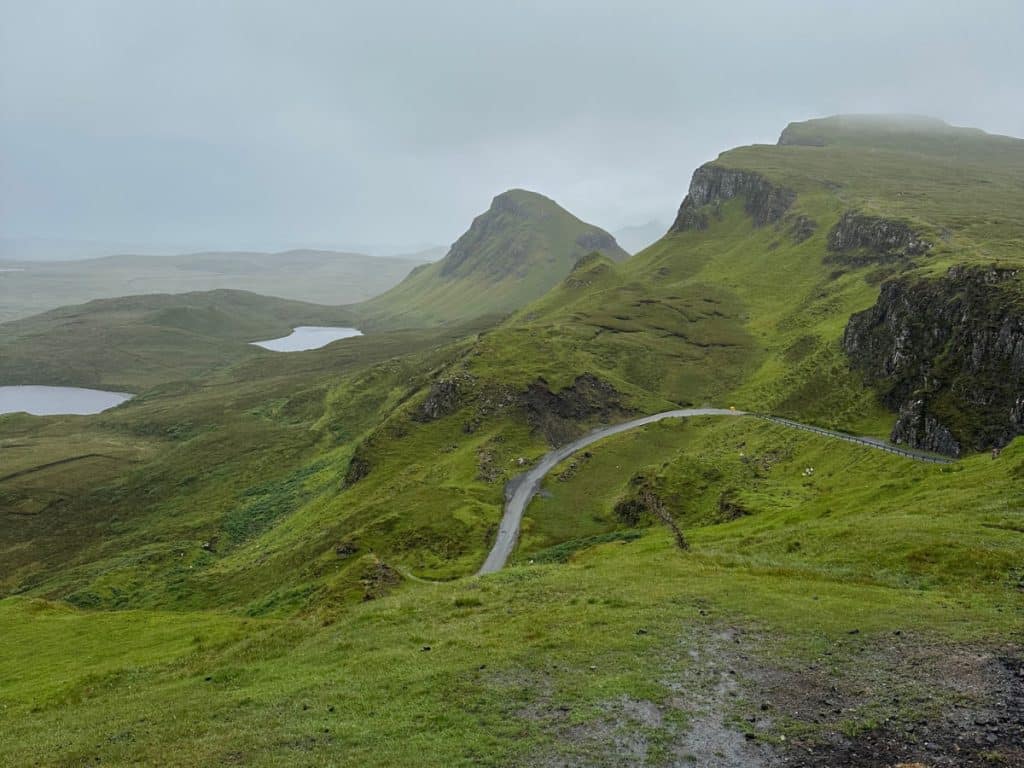
My Top Scotland Travel Tips
Note: This post contains affiliate links. If you click a link and make a purchase, I may receive a small commission at no cost to you.
Language
English is the official language in the United Kingdom and the dominant language in Scotland. There are still those that speak Scots in the Lowlands or Scottish Gaelic in the Highlands, but getting around Scotland is no problem for English speakers — although you may need to listen closely to understand those with a heavy Scottish accent.
Currency
As part of the United Kingdom, Scotland uses the British Pound (£). Scotland actually has its own pound notes but you can use English bills as well.
Money
Almost all restaurants, shops, and parking machines take chip-enabled credit cards and/or digital payments such as Apple Pay. However, you will need coins for some parking machines and coins or small bills for tips or small purchases. I’d recommend either requesting small bills from your local bank before you leave or visiting an ATM when you arrive.
If you are wondering how much money you need, be sure to read my post on how much a Scotland trip costs.
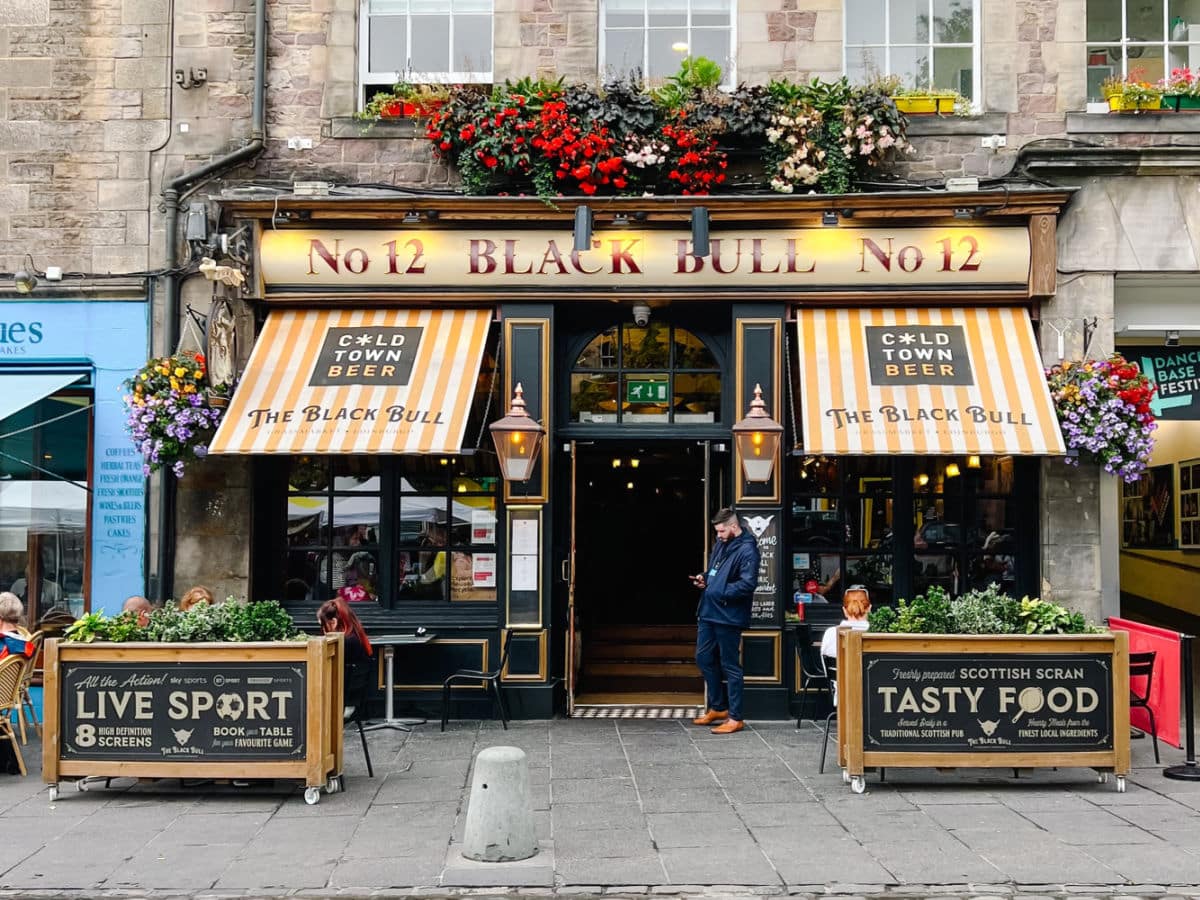
Tipping
Tipping is not the same as in the U.S.. In many instances, service is included at restaurants. If you are paying by card and want to leave a tip, you need to let the server know to add it before you tap your card. For sit-down restaurants, a 10-15 percent gratuity is appropriate but not necessary. At casual cafes, you can leave a few coins or round up your bill.
Electrical
Scotland uses 230 voltage and you will need a three-pronged adapter with a G-type plug, which is different from most of Europe. If your appliance or device has a dual voltage power supply (which you can usually check by looking on the label or manual), you only need a plug adapter. Dual voltage devices can automatically switch between 120V and 230V.
However, if your device does not have a dual voltage power supply, you will need a voltage converter. It’s important to choose a voltage converter that is powerful enough for your device. The wattage of your device will be listed on the label.
Car Rentals
If you plan on renting a car, be sure to book months or weeks in advance for better pricing and availability, especially if you want a car with an automatic transmission. Try to book the smallest car that will fit your luggage and one that has a back up camera. I’d also suggest getting full insurance. I typically use Auto Europe to compare rates from different vendors. International driving permits are NOT required in Scotland. You can drive on your domestic license for up to one year.
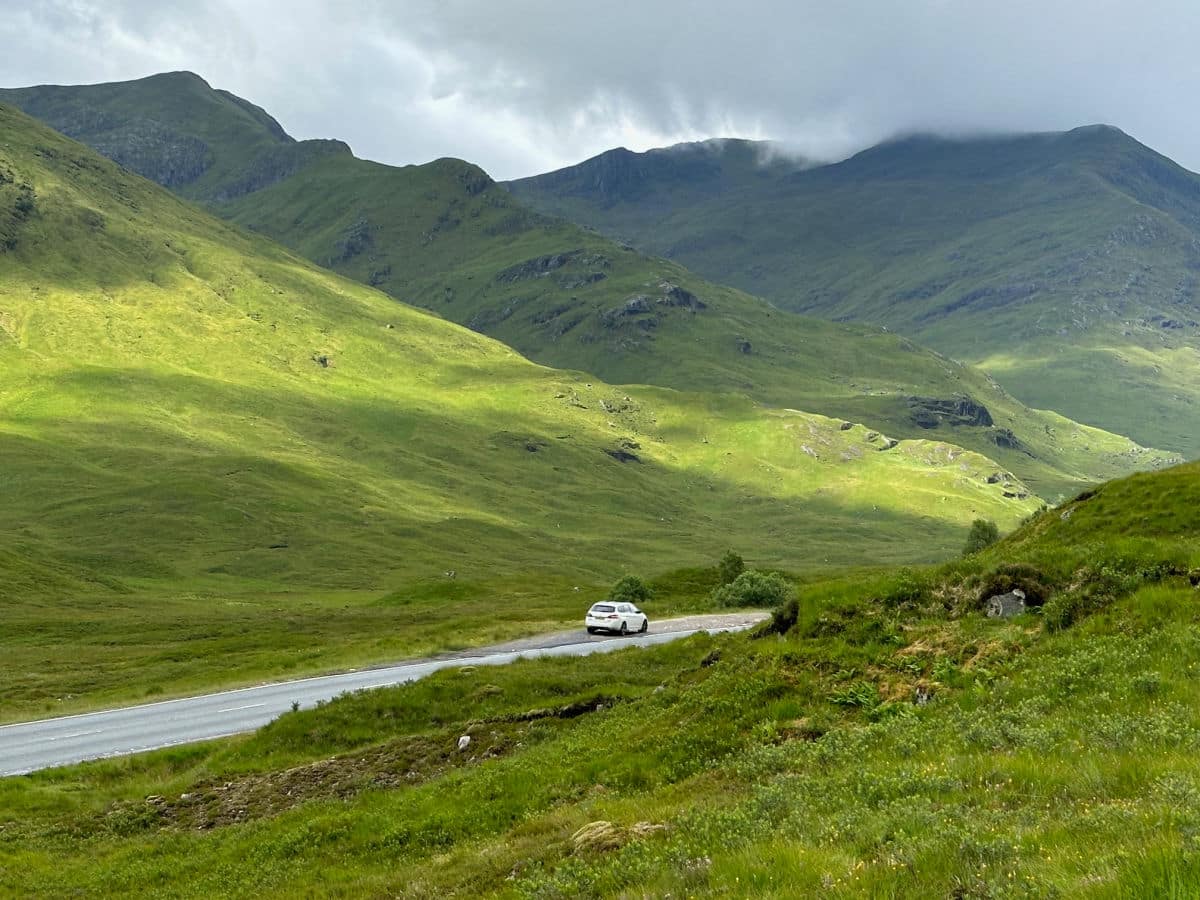
Driving in Scotland
In the United Kingdom, including Scotland, cars drive on the left-hand side of the road. If you are not familiar with driving on the left, it takes close concentration and focus, especially when navigating the country’s many rotaries. Remember to “stay left, look right.” Traffic already on the roundabout has priority, so give way to vehicles approaching from your right. Enter when there’s a safe gap, and indicate your intended exit as you approach it.
Outside of the highways, many interior roads in the Highlands or islands are single lane roads. When you encounter a car coming the other way, one of you needs to pull into the closest pull out designed for passing. This may require backing up to the closest pull out.
Remember to keep an eye out for wildlife, especially sheep, that tend to wander into the roads in the backcountry.
Be sure to follow all the local laws, including speed limits to avoid fines. Scotland has strict drink-driving laws with a lower alcohol limit than many other countries so don’t risk it.
Parking
You will need to pay for parking at most car parks for attractions and towns, including trailheads for popular hikes or natural attractions. I’d recommend taking a photo of your license plate as often you will need to enter this into the parking meter machine when paying for parking. In other instances, you will need to “pay and display”, which means pay for your parking in advance based on how much time you think you will need and then place the receipt in your windshield window.
Most parking meters take credit cards but there are some that will only accept coins so it makes sense to carry coins with you or keep some in the car. Just don’t try to use one receipt from one parking area at another, even if you are still within the original time window. Each receipt is marked with a lot number and they will check (trust me, I learned the hard way and parking tickets are expensive!)
Fuel Up
When you are in the Highlands or the Islands, petrol stations are few and far between so be sure to fuel up when you can and don’t push it too low.
Public Toilets
You can typically find public toilets at popular tourist attractions (even natural attractions such as the Fairy Pools.) However, some of these are pay toilets. This is another reason to carry some coins, although many of these are also tap and go using digital payments. But just because these are paid, doesn’t mean they are well-supplied or exceptionally clean. So carry some extra tissue and sanitizer just in case.
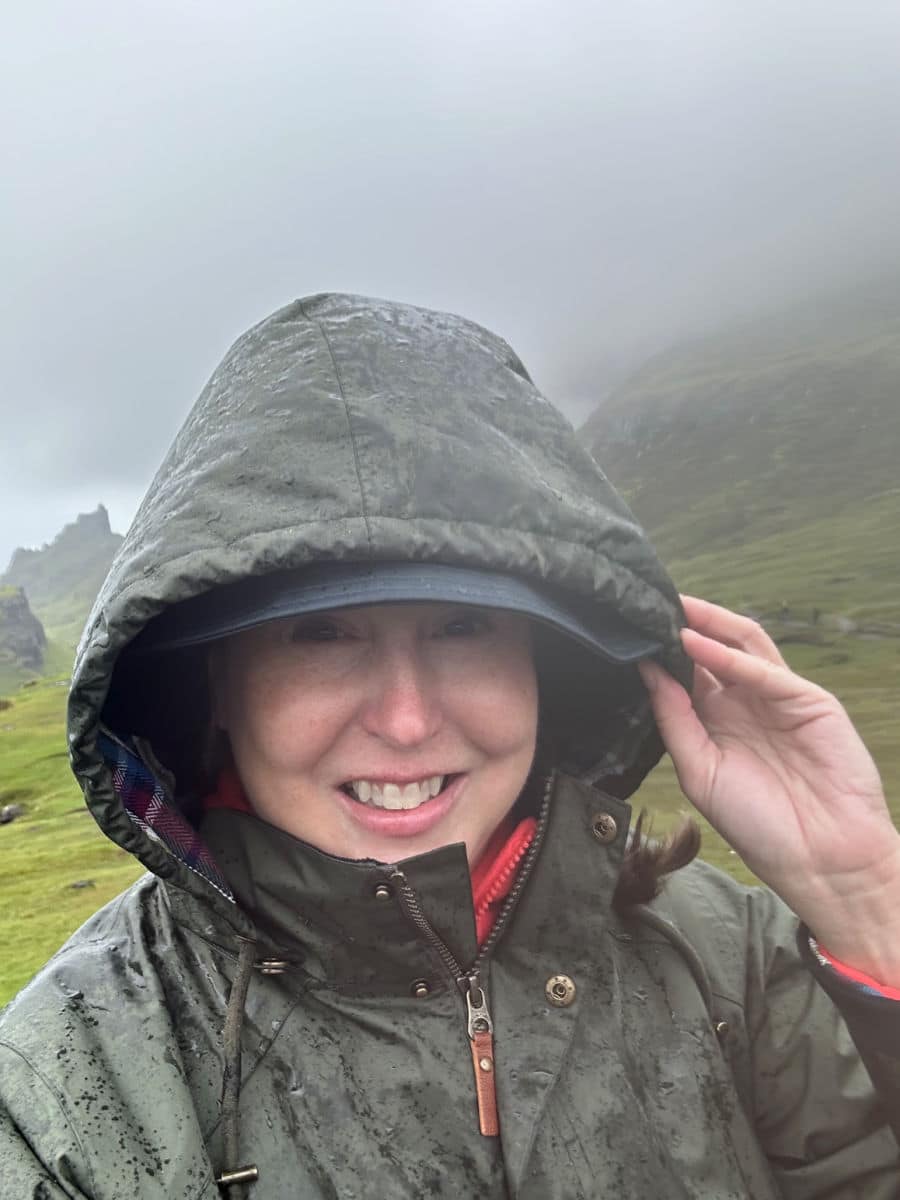
Weather
When in Scotland, you need to be prepared for all sorts of weather no matter when you visit. During the summer months, the average temperatures are a high of 59-63°F (15-17°C) and lows are between 47-52°F (8-11°C).
In the winter, temperatures drop to 41-45°F (5-7°C) with lows of 32-37°F (0-3°C). Keep in mind that Scotland has a wet and cool climate, with a fair amount of wind. The rainiest months are in the winter with an average rainfall around 4 inches per month.
While regional variations exist, coastal areas are generally warmer and less rainy than inland regions and The Highlands experience slightly lower temperatures and higher rainfall than the Lowlands.
Packing
As I wrote about in my Scotland packing list, you need to be prepared when traveling to Ireland. Wind and water proof clothing including a rain coat, rain pants, and waterproof shoes. It is very important to dress in layers. Don’t forget the basics including a hat, gloves, sunglasses, and an umbrella.

Hotel Reservations
Outside of the cities, the accommodations in towns and smaller cities such as Inverness, accommodations can be limited. It is important to book hotel rooms or vacation rentals at least a few months in advance. This is especially true in popular spots like the Isle of Skye. (See my Scotland road trip itinerary to get recommendations on where to stay.)
Restaurant Reservations
In popular destinations such as Inverness, Isle of Skye, or Glencoe, it is also important to make dinner reservations and keep an eye on the hours and days places are open as many restaurants close by 8:00 p.m. in smaller towns.
Food
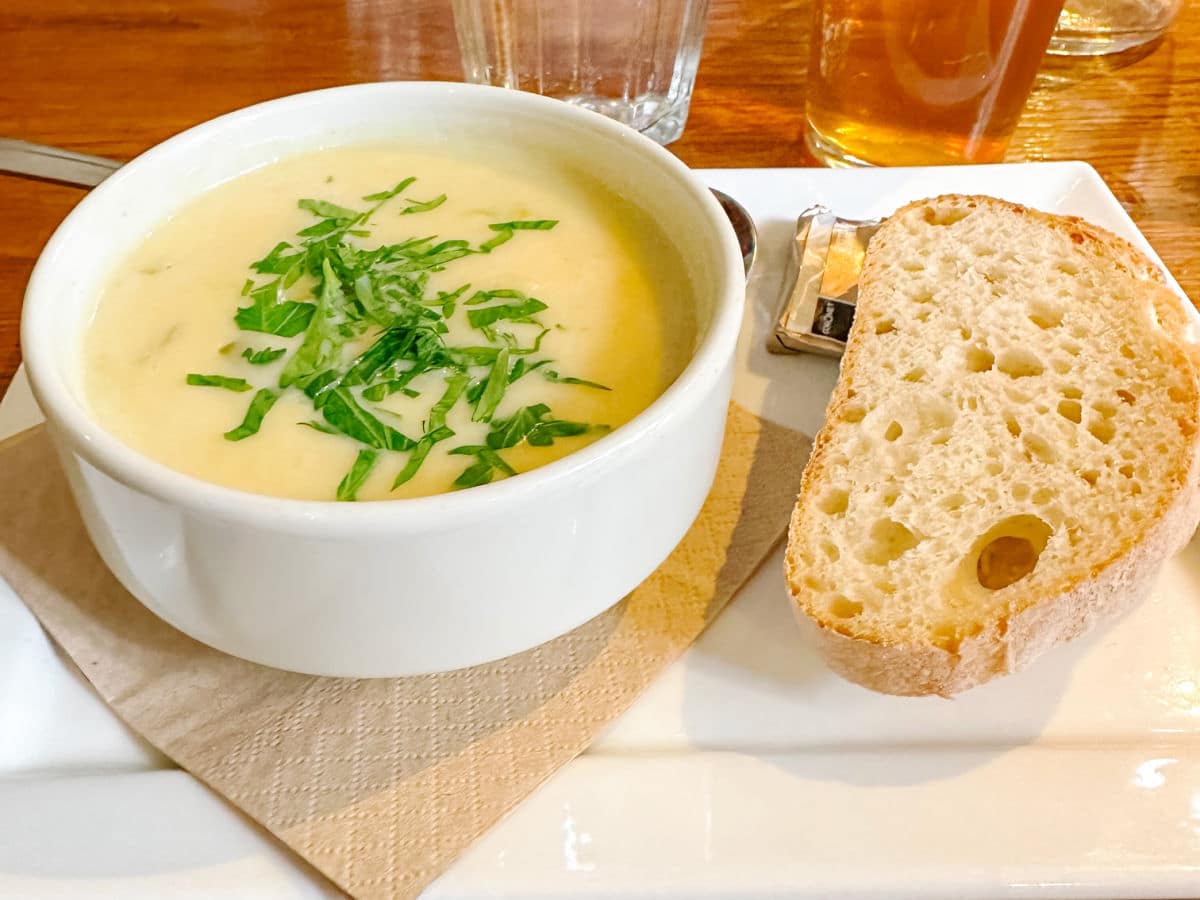
While in Scotland, be sure to try some Scottish specialties such as:
Haggis, Neeps and Tatties: The iconic national dish of Scotland, haggis is a savory sausage traditionally made from sheep’s heart, liver, lungs, and oatmeal, encased in the sheep’s stomach lining. Served with mashed turnips (“neeps”) and potatoes (“tatties”), it’s a hearty and flavorful way to experience Scottish culinary heritage. It took me a while to try this specialty but I ended up liking it because it tastes much more of the spices used in creating it than the meat itself.
Cullen Skink: Originating from Cullen on the Moray Firth, this a warn, creamy soup made with smoked haddock, potatoes, onions, and milk, and typically served with crusty bread for dipping. This is a must-try in coastal areas, especially around Moray and Aberdeenshire, but I had a delicious version in Glasgow.
Scotch Pies: Savory pastries filled with minced meat and onions, Scotch pies are a popular handheld snack or lunch option. The filling can vary from classic minced beef to adventurous varieties like venison or chicken balmoral.
Shortbread: A crumbly, melt-in-your-mouth biscuit made with butter, sugar, and flour, shortbread is a Scottish sweet treat synonymous with tea time. Enjoy plain shortbread for its pure deliciousness, or find versions infused with flavors like chocolate, ginger, or even whisky. I’m a big fan of the millionaires shortbread, which is layered with caramel and chocolate.
Sticky Toffee Pudding: Sticky toffee pudding is a gooey dessert consisting of a light and moist sponge cake, often infused with dates or ginger, nestled in a rich, sticky toffee sauce. It’s typically served warm with a dollop of vanilla ice cream or whipped cream. While the origins of sticky toffee pudding are disputed, Scotland has a strong claim to fame, thanks to the Udny Arms Hotel in Aberdeenshire. They boast of creating the iconic dessert back in the 1960s.
Fish and Chips: While the dish may not have originated in Scotland, their contribution to its evolution and continued popularity is undeniable. Fish and chips are a staple of Scottish cuisine and culture, just as much as they are in the rest of the UK.
Deep-Fried Mars Bars: I was really shocked when I asked locals about famous foods and they told me about deep-fried Mars bars that are battered and deep-fried until golden and enjoyed after the pub.
Scotch Whisky: The undisputed king of Scottish drinks, whisky (not called Scotch in Scotland) is steeped in history and tradition. With its distinct smoky flavor and wide variety of regional styles, it’s a must-try for any visitor. Explore peaty Islay drams, floral Highland expressions, or Speyside’s fruity whiskies. Just remember that whiskey spelled with an -ey refers to Irish whiskey.
Irn-Bru: This bright orange carbonated beverage is often called Scotland’s “other national drink.” Its unique flavor is hard to describe but I found it something of a cross between orange soda and bubble gum. Bottom line, it is excessively sweet.
Scottish Gin: Scotland’s gin scene is booming, with distilleries across the country creating unique and flavorful expressions. Expect botanical notes inspired by the Scottish landscape, like juniper, heather, and berries. My friend Keryn came back with at least a dozen little bottles to sample the various flavors!
Ferries
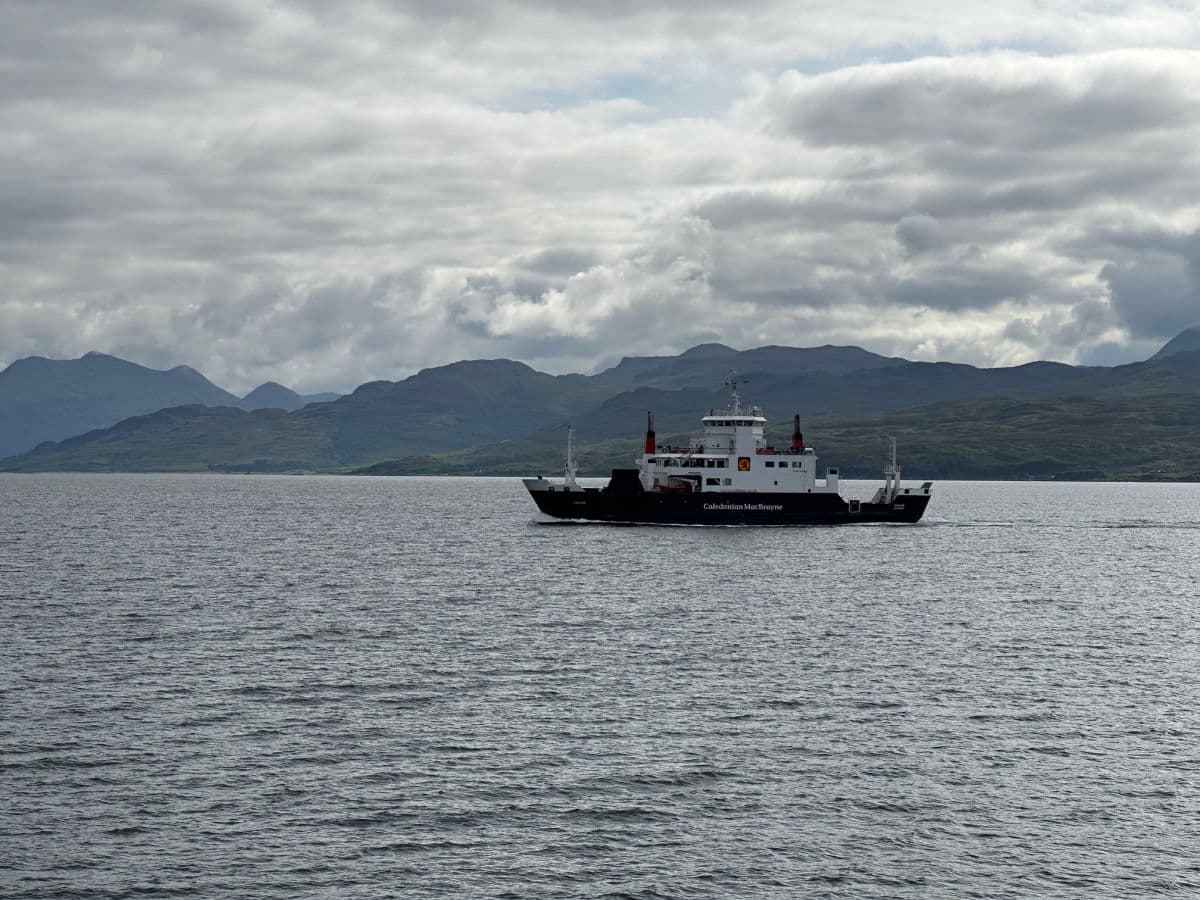
If you plan on visiting any of the islands by car and want to take a ferry, you will need to book a timed ticket in advance.
Attractions
Some attractions such as the Royal Tattoo, Edinburgh Castle tickets, or popular tours can sell out in the busy season so you should book your tickets in advance. As I mentioned in my Edinburgh itinerary, I would also suggest going to popular attractions such as the Edinburgh Castle early in the morning when it first opens.
Best Time to Visit
The most popular time to visit Scotland is during July and August, especially during festivals such as the Fringe Festival, events like the Royal Edinburgh Military Tattoo, the Highland Games, and Ceilidh at the Castle with live traditional music and dancing in Edinburgh Castle.
In terms of weather, June brings pleasant temperatures and long daylight hours (when I was there in late June/early July the sun didn’t set until nearly 11:00 p.m.. September is still warm enough (it was actually quite warm the year I was there in early September), and you will also find beautiful autumn foliage and fewer crowds than peak summer.
May offers springtime charm with blooming flowers, pleasant weather, and no midges (tiny biting insects!). Not as sunny as summer, but less crowded.
Know Some History
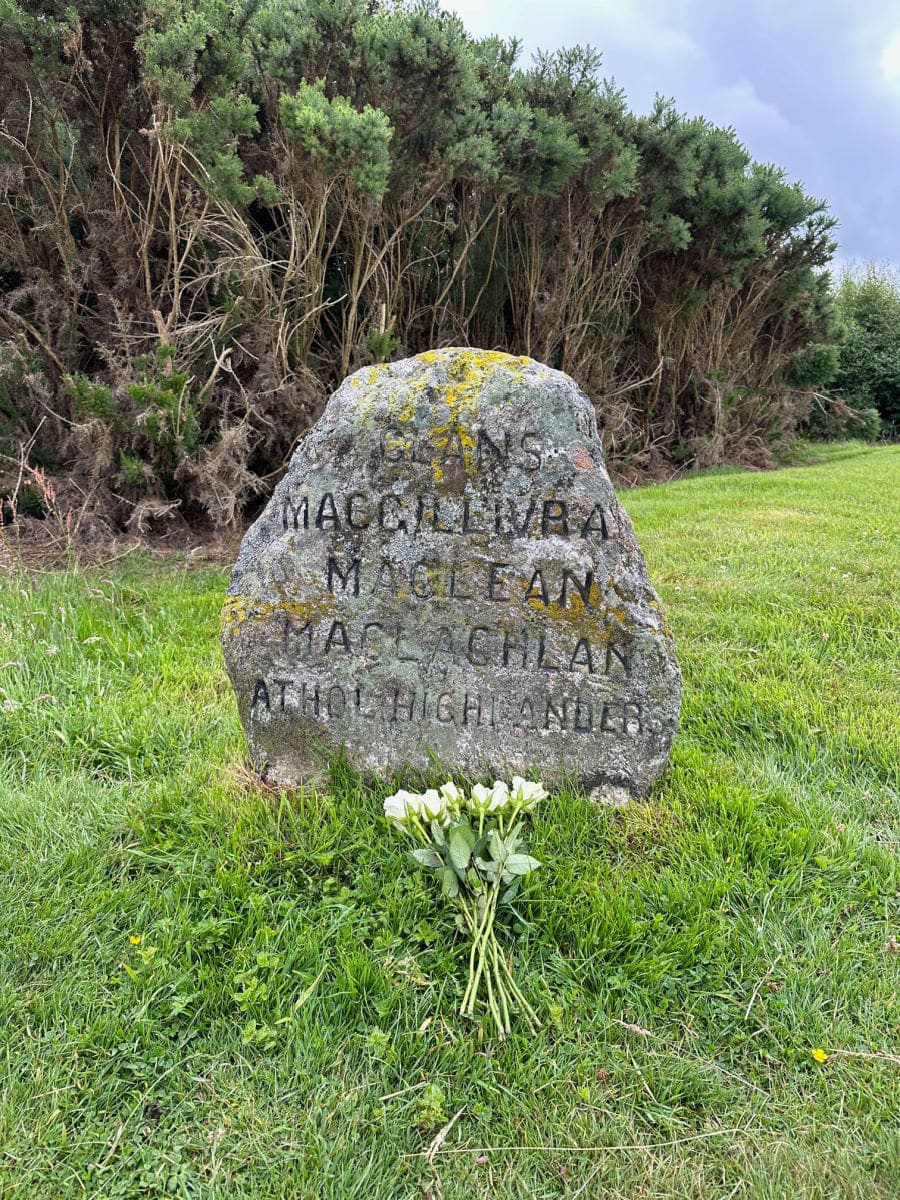
When you are visiting castles and historic sites such as the Culloden Battlefield, it helps to know some basic Scottish history. I was really surprised to see how front of mind what seems like distant history can still be, such as a friendship with the French that goes back to old alliances with France against the English.
To brush up on your Scottish history before you visit, here are some books, movies, and shows you may want to enjoy.
Things to Watch:
- Braveheart (1995): While not historically accurate, it’s a classic epic film depicting the life of William Wallace, a Scottish rebel leader, and gives insight into the Scottish Wars of Independence in the 13th century.
- Outlaw King (2018): A more grounded portrayal of Robert the Bruce, another key figure in Scotland’s fight for independence from English rule.
- Mary Queen of Scots (2018): Explores the tumultuous reign and rivalry between Mary, Queen of Scots, and Queen Elizabeth I of England, shedding light on complex political and religious tensions of the 16th century.
- Rob Roy (1995): A fictionalized but entertaining account of the life of Rob Roy MacGregor, a Scottish clan chief and folk hero in the 18th century.
- Outlander (2014-present): This popular TV series follows a 20th-century nurse who travels back in time to 1743 Scotland, immersing viewers in the Jacobite rebellion and Highland life.
- Monarch of the Glen (2000-2005): A charming drama about a family running a deer farm in the Scottish Highlands, showcasing the beauty of the landscape and rural traditions.
- Secrets of the Clans (2008-2010): Explores the history and traditions of various Scottish clans.
- Wild Scotland (2014): Stunning natural history documentary capturing the breathtaking landscapes and wildlife of Scotland.
Things to Read:
- Outlander by Diana Gabaldon: A sprawling series blending romance, time travel, and historical intrigue in 18th-century Scotland during the Jacobite rebellion.
- Wolf of the North by William McIlvanney: A gritty portrayal of Viking-era Scotland through the eyes of a warrior battling for survival against invaders and internal power struggles.
- The Flame Bearer by Kathleen Winsor: A sweeping historical saga following the Bruce family and their fight for Scottish independence from England.
- Redcoats by Neil Oliver: A thrilling account of the Battle of Culloden from the perspective of both Highland fighters and British soldiers.
- Sunset Song by Lewis Grassic Gibbon: A poignant and tragic novel depicting the harsh realities of rural life in 19th-century Scotland, focusing on a woman’s struggles and resilience.
- The Last Summer by Karen Swan: In 1930, the residents of small St. Kilda are relocated to mainland Scotland.
Save this to Pinterest
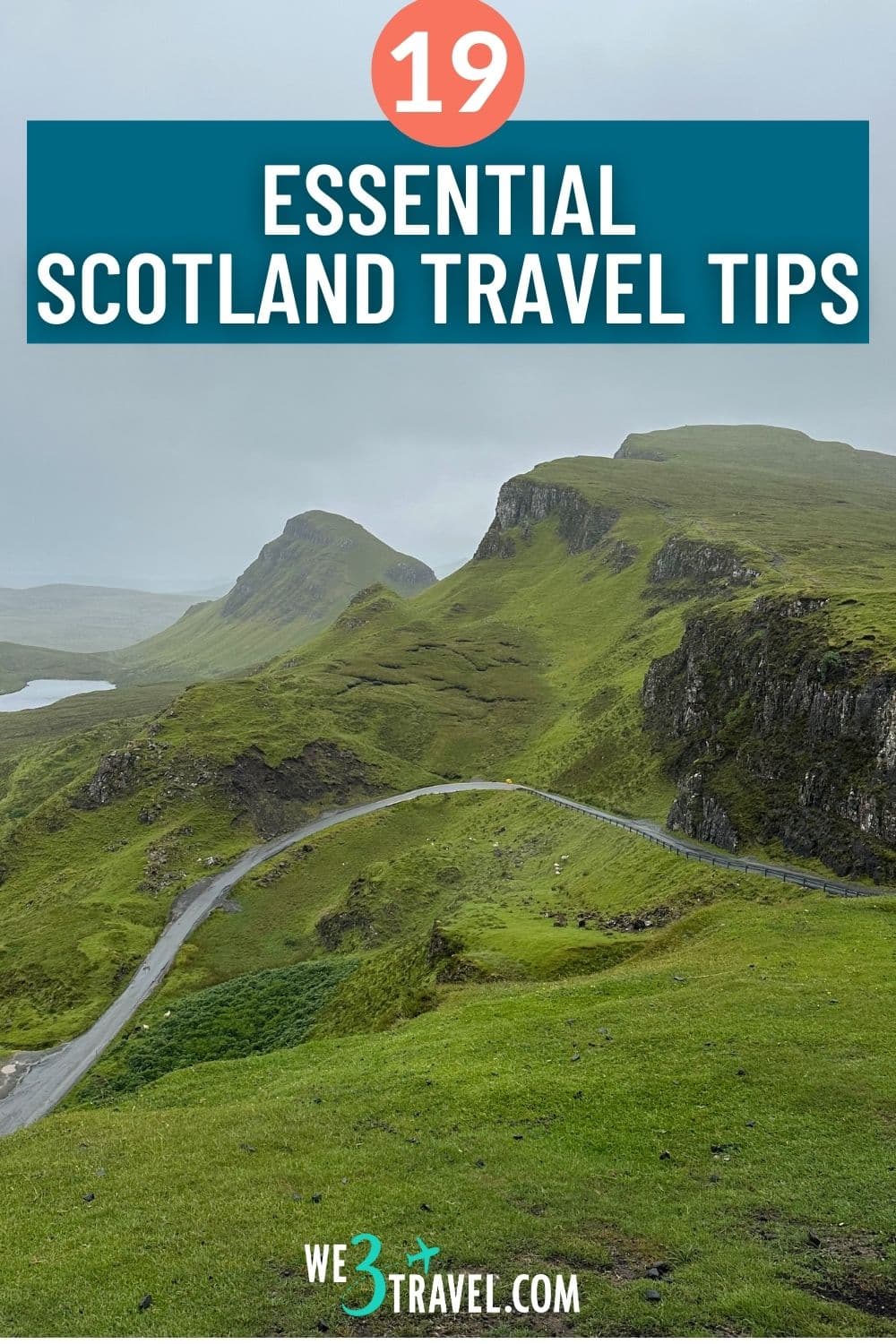

Tamara Gruber is the Founder and Publisher of We3Travel. A former marketing executive and travel advisor, Tamara is an award-winning travel writer and recognized expert in family travel. Tamara is a member of SATW and the Adventure Travel Trade Association, and serves on the Board of the Family Travel Association. She is also the publisher of YourTimetoFly.com and the co-host of the Vacation Mavens travel podcast.


